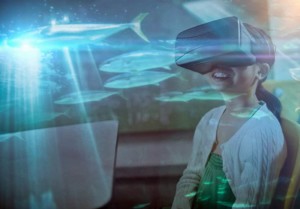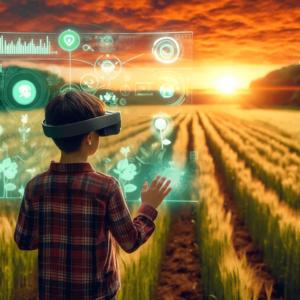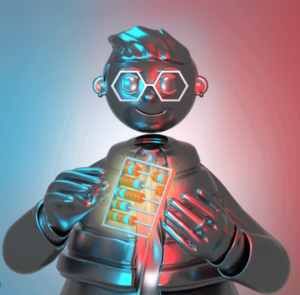The Ready Player One Test: Systems for Personalized Learning
Key Points
-
The single narrative education system is no longer working.
-
Its main limitation is its inability to honor young people as the dynamic individuals that they are.
-
New models of teaching and learning need to be designed to center on the student, not the teacher.

By: Dagan Bernstein
The single narrative education system is no longer working. Its main limitation is its inability to honor young people as the dynamic individuals that they are. New models of teaching and learning need to be designed to center on the student, not the teacher.
In Dr. Benjamin Freud’s article, The Metaverse will make schools places of becoming, Chapter I asks, “Why do I need to learn from you?”.
This question is an invitation to us as educational professionals to create systems that allow students to personalize their learning. Again from Dr. Freud, “Kids know that they can learn anything they’re curious about and that there is so much more out there than the curriculum they are fed.” Education 3.0 has an important role to address this directly.
Immersive technology via the metaverse can support students’ curiosity about topics that interest them. Blockchain technology can help document, certify, and facilitate these learning experiences in a trustless way. Token-based systems have the potential to provide students with access to resources that can help grow and regenerate these learning experiences.
Dr. Freud summarizes these points well by stating, “Learning is liberated when we are released from our physical constraints when the physical world subsumes the imaginary world and we can access anything, anyone, anytime.”
It’s our responsibility as educators to pay close attention to how these immersive worlds are designed and implemented as we transition out of the physical world and into a new one. If students lose agency in these immersive worlds there is the potential to continue the corporate-owned and data-driven models of identity extrapolation.
Immersive technology via the metaverse can support students’ curiosity about topics that interest them.
Dagan Bernstein
Learning benefits when it is personalized. Immersive technology creates personalization that goes beyond the surface level that is discussed in education circles.
Is it regenerative?
The concept of regeneration (and regenerate, regenerative, and regeneration) has been borrowed from biology and has begun to spread across a variety of well-known industries–from agriculture, energy, finance, and education. The definition changes slightly with context, but we can extract a generalized definition of regenerative to mean “to regrow or be renewed or restored.”
The sustainability of an immersive learning system depends on its ability to continuously grow itself anew. Educator Daniel C. Wall relates this concept to education in his Medium article titled Education and Regenerative Cultures (Version 0.0) the following way:
“Education for regenerative cultures is about the life-long process of enabling and building the capacity of everyone to express their unique potential to serve their community and the planet and in the process serve themselves.”
This circular relationship between building the capacity of the individual to serve the community, serving the planet, and then in return serving the individual must be a foundational principle of the metaverse. Without this grounding in regeneration, immersive learning becomes a novelty that replaces outdated learning models but doesn’t add any value.
The strong interest in virtual, augmented, and immersive technologies put us in a dangerous position. We are “cutting off one’s nose to spite one’s face” if we don’t lean into the innovative pedagogy that researcher Justin Reich described in his book. Essentially cutting off in-person learning to spite its monotony.
We can examine how regeneration can support innovative pedagogy in immersive learning environments by digging a little deeper. Author Carol Sanford developed “The Regenerative Paradigm for Education” which consists of 7 First Principles of Living Systems. These are described in a series of articles titled The Regenerative Education System and Practice.
There are characteristics found within these principles that contribute to regenerative learning:
- Learners are agents of their learning
- Learners are whole individuals made up of mind and body
- Learners possess the ability to teach themselves
- Learning happens through both participation and observation
- Learning happens in small nodal communities
Educators can maximize the effectiveness of immersive technology by infusing these characteristics of regenerative learning into their instruction. The metaverse will be another technology that “fails to disrupt”) to borrow from the title of Reich’s book) if we don’t
Does it allow for learning to happen non-linearly, at any time and any place?
Decentralization has taken on a new meaning in the context of web3 and blockchain. The World Bank has identified different forms of decentralization to help communicate what it means in different industries.
For schools I’ll use the definition of decentralization coined by education innovator Mike Peck in his article Schools in an Era of Decentralized Learning Networks, “educational systems that operate both inside and outside of the traditional school structure, using a variety of methods, sources, and technologies to facilitate teaching and learning.”
Why is this traditional school structure that is limited by the physical space of the school building and the time of the school schedule no longer viable? There are two main reasons, one is the inequality of this structure, and the second is the changes in how our society is structured.
Let’s break down each of these two to understand them better.
A major reason for the inequality in our public school spaces stems from funding models in the United States that are based on income from property taxes. The type of educational experience and learning opportunities, as well as the facilities and resources that young people have access to, are impacted by where they live. There is an even greater disparity happening in countries with emerging economies and more dislocated school systems.
The structure of our school day and the school year is extremely limiting as well. The design of the school calendar is out of date and based on societal needs from centuries ago. In terms of the in-day schedule, this Atlantic article examines adjustments to disrupt the common 8 am-3 pm model.
It also is time to rethink the structure that limits learning between eight or nine in the morning to three or four in the afternoon from August/September through May/June. We need to move towards “just in time” learning models that allow learning to happen at any time and anywhere. If a student learns best during the summer months from 2 pm to 9 pm we should be able to offer learning that honors that. Same for a student who prefers 5 am to noon.
Immersive technologies have the ability to facilitate learning that is accessible across space and time. This will help create this future in which educational systems are operating as Dr. Peck says, “both inside and outside of the traditional school structure.” The metaverse will be a key technology as these systems are built.
Non-linear learning will help incorporate two learning strategies that have been proven to improve learning efficacy, the jigsaw method and self-efficacy. The jigsaw method empowers students to become content experts and disseminate this knowledge to their peers. And self-efficacy is defined by John Hattie as “The confidence or strength of belief that we have in ourselves that we can make our learning happen.”
Shifts in the architecture of our schools and effective pedagogy combined with immersive technology are the ingredients for how we can reimagine education for the next generation of learners.
Concluding Thoughts
Education is particularly ripe for change, but many transformative technologies have not been invited into our learning spaces. Legacy systems are resistant to embracing things that will make their structures and rules irrelevant.
Immersive technologies are one of these technologies. Instead of pushing them away, we need to invite them into our schools to help facilitate new learning opportunities. The “Ready Player One Test” is a framework that educators can use to guide their decision-making around immersive technology because not all implementations of this technology are beneficial.
When the opportunity arises to implement learning that uses immersive technology ask yourself if the learning you are designing passes the Ready Player One Test:
- Does it allow learners to immerse themselves in environments that would be too expensive or dangerous to experience otherwise?
- Can the learning be personalized by the student?
- Is it regenerative?
- Does it allow for learning to happen non-linearly, at any time and place?
Dagan Bernstein is an educator from Hawai’i who believes in empowering deep learning through relationships and joy. Follow him on Twitter at @DaganBernstein.







0 Comments
Leave a Comment
Your email address will not be published. All fields are required.